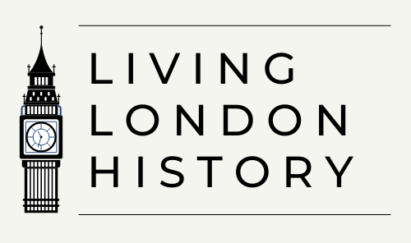If you are looking to escape central London and go for a good old fashioned woodland walk then there is no better place than Epping Forest,
There is also plenty of history including the wonderful Queen Elizabeth’s Hunting Lodge.

I took the overground train to Chingford station and then a circular forest walk to the King’s Oak pub for lunch! See the route below. It is about 11km and took me roughly 3 hours (not including lunch plus beers).
A Royal Forest

Epping Forest is ancient woodland that was once part of the much larger Forest of Essex. It covers roughly 8000 acres and today straddles the border between Greater London and Essex.
In the 12th century, during the reign of King Henry II, Epping Forest was designated a Royal Forest or ‘kingswood’. A Royal Forest was an area protected by law to preserve the ‘venison’ (all wild game, not just deer) and ‘vert’ (the greenery that sustains the venison) for the exclusive use of the King. It is thought that by the early 13th century around one third of Southern England was designated a Royal Forest.
In 1878, following a dispute over enclosure by landowners, the City of London Corporation purchased Epping Forest to keep it open to the public. They still own and manage the forest today.
Henry VIII And The Tudor Hunt
If alighting at Chingford station, very soon into your walk, you will come across Queen Elizabeth’s Hunting Lodge.

In 1542 King Henry VIII commissioned what was then known as the ‘Great Standing’. This was essentially a wooden framed platform; a grandstand, from which to observe the hunts in Chingford. There is no evidence Henry actually visited this particular stand but certainly enjoyed hunting in Epping Forest.
The Great Standing would have been part of a wider system of smaller stands and paddocks on this site.

The platform would have been used for a style of hunting called ‘bow and stable’ hunting. This involved ‘beaters’ and their dogs driving the deer towards the hunters positioned on the stands, ready with their crossbows.
Queen Elizabeth’s Hunting Lodge
The Great Standing was renovated in 1589 during the reign of Queen Elizabeth I. The walls were filled in and a roof added to create what we have today: a three-storey timber framed construction.

The windows would have been open for observing and participating in hunts.

The walls would have been draped in colourful banners and heraldry.

There is a tale associated with the lodge that Queen Elizabeth I rode up the stairs here on a white charger to celebrate the victory over the Spanish Armada in 1588. The earliest known reference to this story is from a magazine in 1833.

There is sadly no actual historical evidence from the period that she ever visited the lodge but it is a nice story nevertheless.

Other Uses
After the death of the Queen, from the 17th century onwards, it was lived in by a series of families. The people living here were ‘under-keepers’, likely charged with looking after this area of the forest and maintaining law and order.
When the City of London Corporation took over Epping Forest in 1878, they made sure it was preserved as a building of historic interest and opened it to visitors.
From the late 1800s until 1960 it was a natural history museum run by the Essex Field Club.
The Lodge Today
Since 1960 it has been run as a museum of the building’s use as a hunting lodge by the City of London.
Inside you will of course find the obligatory plastic feast. Is it even a museum of Tudor history if it doesn’t contain a plastic pie?!

There are also information boards and Tudor-style costumes to peruse.
It is also worth popping into the Epping Forest visitor centre next door as they have an interesting exhibition on Epping Forest and its history.
Find out more about visiting the centre here and the lodge here.

Thank you for reading! More London history below…
Visiting The Site Of One Of Victorian London’s Worst Slums
Skimming over the East End of London on Google maps (or your maps provider of…
An Inspiring Community Campaign: The East London Waterworks Park
I have written a lot since starting this blog about many of the amazing green…
Celebrating 60 Years Of The London Ambulance Service
2025 marks the 60th anniversary of one of London’s most essential services: the London Ambulance…
What Are The Odd Red Pillars By Blackfriars Bridge?
If you have ever walked over Blackfriars Bridge you may well have spotted these odd…






I was in Epping Forest recently. You might also like to visit Waltham Abbey where king Harold is buried
Fantastic article! I love these so much, keep them coming.